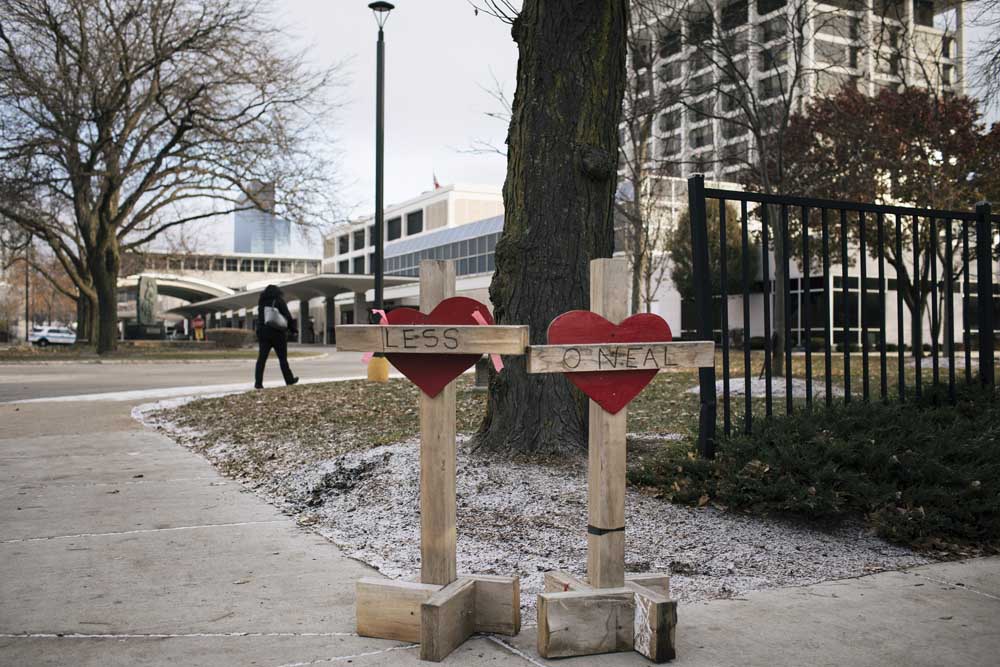Acts against women commonly caused by partners
Published 12:00 am Thursday, November 22, 2018

- A memorial for Dr. Tamara O’Neal and Dayna Less, a pharmacy resident, who were killed in a shooting at Mercy Hospital & Medical Center in Chicago, Nov. 20, 2018. Colleagues said O’Neal’s ex-fiancé opened fire at Mercy Hospital on Monday. They remember her as a talented and caring physician. (Alyssa Schukar/The New York Times)
The fatal shooting Monday at Mercy Hospital & Medical Center in Chicago highlights a sobering reality about workplace violence: women who are killed at work are commonly targeted by intimate partners.
Forty percent of women who died as a result of workplace violence in 2016 did so at the hands of domestic partners or relatives, compared with 2 percent of men, according to the Bureau of Labor Statistics.
Men, who represented 82 percent of the 500 workplace homicide victims last year, are most commonly killed by robbers.
Mercy emergency room physician Tamara O’Neal had reportedly broken off her engagement with the gunman, Juan Lopez, a few months before he confronted her in the hospital parking lot Monday and shot her multiple times. Officials said Lopez subsequently went into the hospital, where he killed a police officer who had rushed to the scene and a 25-year-old pharmacy resident as she came out of an elevator.
Mary MacLaren, chair of the Workplace Employee Assistance Program Task Force for Chicago Says No More, an advocacy group that works on domestic violence and sexual assault issues, said she had a sinking feeling when she heard the news the perpetrator may have been the doctor’s ex-fiance.
“That’s the most dangerous time, when the person tries to get out of (the relationship),” she said.
Recognizing domestic problems often spill into the workplace, MacLaren’s task force works with businesses to create cultures where employees feel comfortable talking about it with management.
While 85 percent of companies have a policy about violence in the workplace, only 14 percent address sexual assault and domestic violence, she said.
“There is a lot of shame and embarrassment associated with domestic violence,” she said.
She recommends people who have been victimized by domestic violence get orders of protection and provide security guards at their workplace with a photograph of the individual.
It is also incumbent on bystanders to raise the issue if they are aware a co-worker is having domestic problems, which can manifest not only as physical abuse but also emotional or financial abuse, she said.
The Mercy shootings highlight the high risk of violence at hospitals and other health care environments, which are easily accessible to the public.
The rate of nonfatal violent injuries sustained by nurses is three times higher than the average of all other private sector workers, said Kenneth Zinn, political director of National Nurses United, a union representing 150,000 registered nurses across the U.S. that has been bringing attention to the issue.
Often those incidents stem from the high-stress hospital environment, where people who are seriously ill, on drugs, suffering from mental illness, involved in the criminal justice system or distraught by the cost of medical care can lash out.
Because hospitals “are a microcosm of society at large,” domestic violence also comes through the doors, Zinn said.
The union backs federal legislation introduced on Friday that would mandate that the Occupational Safety and Health Administration create a national standard requiring health care and social service employers to develop and implement a comprehensive workplace violence prevention plan.
The bill — whose mandate includes hands-on training, adequate staffing for patient care and security and employee involvement in all steps of the plan — mirrors legislation adopted in California.
While it is impossible to know if such a plan could have reduced the casualties at Mercy, Zinn said it helps if everyone is equipped to respond immediately.
“If someone knew to call the police, that should have triggered a response plan that was well rehearsed,” he said. “Why was the shooter even able to get in the doors after the violence that happened outside the facility?”






